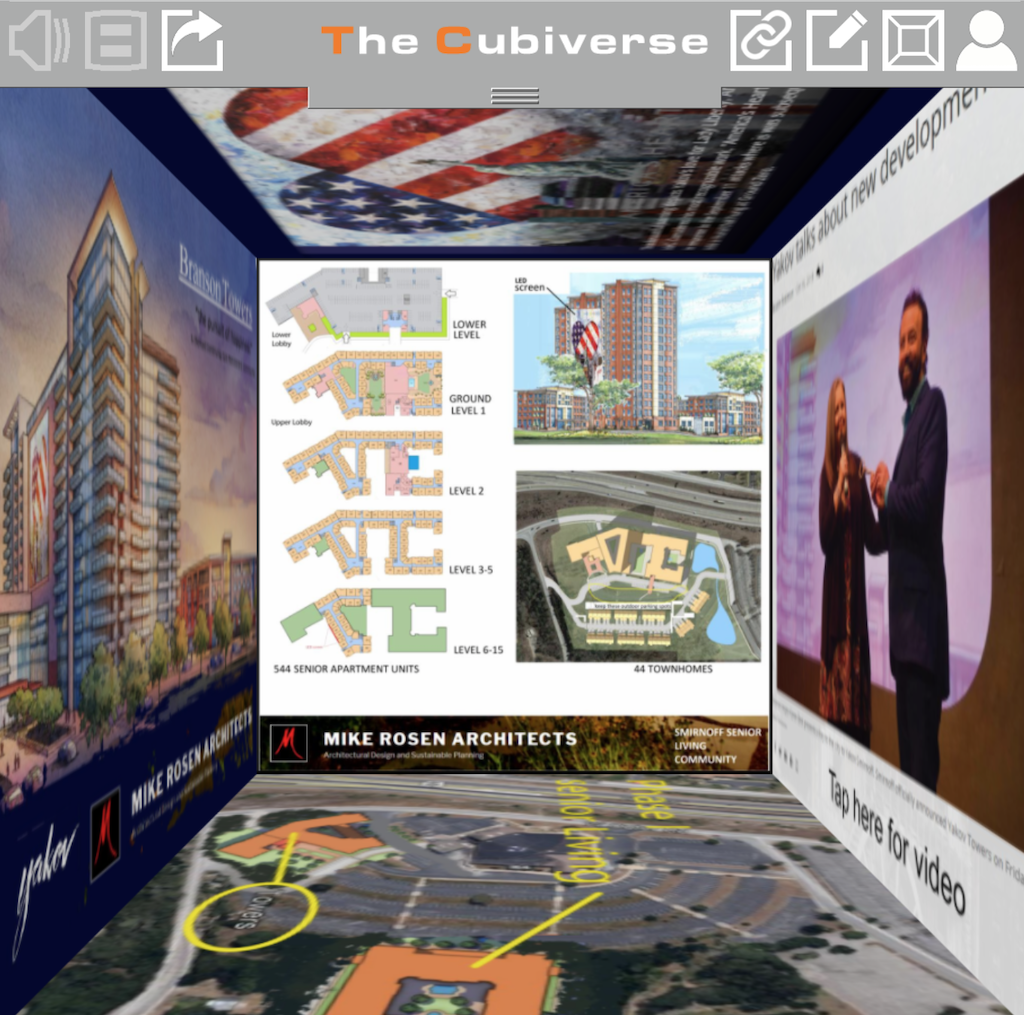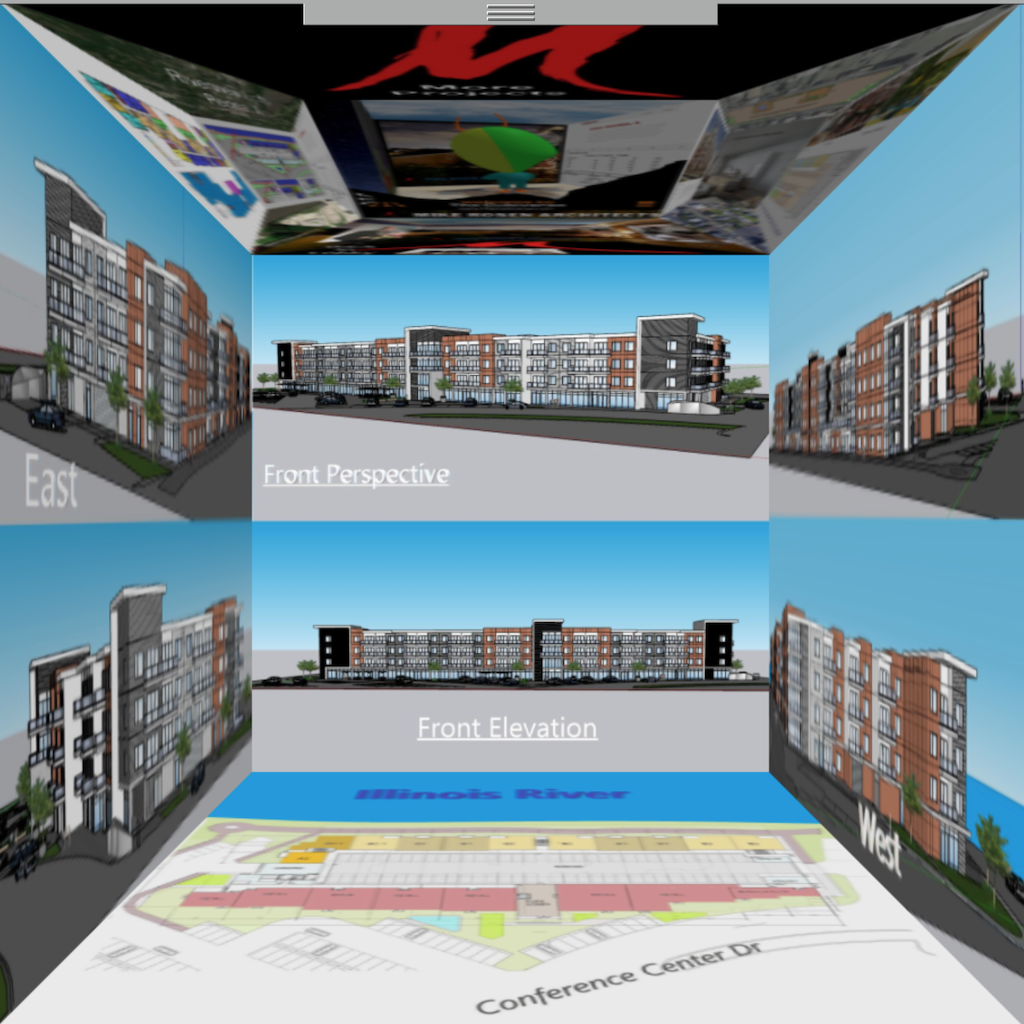Step into the future with the Cubiverse, a cutting-edge Web3 platform that unlocks the power of immersive experiences. Crafted to organize data, multimedia, and 3D models with an intuitive cubic interface, The Cubiverse reshapes the landscape of digital interaction and exploration. At its helm stands Mike Rosen, a seasoned architect, and visionary innovator. With decades devoted to shaping the landscape of digital content and engagement, Rosen brings a unique perspective to The Cubiverse, blending creativity and functionality that speaks to its profound understanding of design’s intricate dance between form and purpose.
The Architect’s Role in the Metaverse
Rosen’s artistry effortlessly merges aesthetics and function. As an advocate of form following functions, he ensures that the environment’s allure enhances its practicality, meaning that how something looks should match what it does. He guides users through curated narratives using strategically placed visual cues. Overall, he preserves the spirit of organic exploration, wanting everyone to be able to explore freely and naturally.
“Architects understand this sensitive balance in space creation where solid forms, signage, and lighting, can direct movement in a desired direction by the planners,” Rosen says. “We also understand the elements of scale, proportion, shade and shadow, sound, textures, and lighting to create the mood of a space.”
Picture this: crafting a 100% grid-connected corporate marvel complete with PV solar prowess and calculating façade heat loads with Fortran punch cards for your architectural thesis. Fast forward to debuting the Great American Virtual Home at the International Builders Show. Finally, zoom into gracing the Franklin Institute with a virtual reality spectacle under the VR Center’s leadership, putting Philadelphia’s VR model on the global map. Rosen’s legacy in design vibrates throughout his career, marked by his skills at interfering with diverse elements. From the start of his architectural journey, his fascination with cutting-edge technology was tangible, even in his school days.
Creating Cubic Environments
Today, Rosen’s architectural ventures seamlessly weave AI-driven building management tech and automated parking systems into the fabric of sustainable innovation. From the outset, his focus is fixed on the environment’s ultimate purpose. The core reason for the cube’s existence? The guiding compass behind every move. Understanding this goal charts the course for selecting the precise tools that will pave the way to reaching that very outcome.
“In the digital realm, the limits of visualization are defined solely by our imagination,” Rosen explains. “In the cubic environment, I use audio, video, lighting, animations, 3D models, and hyperlinking of components to achieve effects not financially viable in the real world. Selecting the most fitting tools to capture the desired intent begins with understanding the audience that will engage with the environment. For example, if we are directing the message toward kids, we may use more videos and animations with appropriate music that targets this demographic. If the users are professional engineers and architects, we may insert a 3D model they can integrate or link to a digital twin.”
Sculpting the environment is a straightforward affair: six directions, each side sharing a connection with its neighbors in an aesthetically pleasing manner. Their website offers valuable insights for promising creators: think proportions, seamless edge transitions, and optimizing file sizes. In today’s digital arena, the guiding principle is crafting enticing, user-friendly spaces. Spaces where anyone, including newcomers, can effortlessly dive in, showcase creations, collaborate, shop, and share joyfully with friends.
“This is what the Cubiverse aims to deliver,” Rosen says. “A simple-to-use gateway to the Metaverse that anyone can use. The environments capture users’ attention and offer significantly more content and diverse content delivery options than the current 2D internet provides. We have been using 3D models for over 30 years in my practice. Today’s news is the advancement in cloud-based computing, granting everyone access to substantial computational power on their devices. This was not available just a short time ago. Now, we have access to a digital twin of Earth containing all available GIS data that we can link to in real time. The game-changer lies in the ability to navigate to any site, click a link, and enter a cube containing comprehensive details about the building and its occupants!”
Envisioning the Future of Metaverse Engagement
The intrigue deepens with artists like Cage the Elephant and Infected Mushroom woven into the Cubiverse’s tapestry. Currently adorning Rosen’s personal cube collection, these artist bonds hold a distinct entry, forged through his personal connections to amplify his enjoyment. Against the backdrop of platforms like the Cubiverse, we glimpse a future in which consumers traverse three distinct realms to engage with businesses and the world.
“The real world will augment with accessible online digital twins, and a third Metaverse emerges – where imagination alone sets the limits,” Rosen says. “Picture walking up to a building, scanning a CubiCode, and instantly linking a cube containing all pertinent information about the location. From home, they can access the same cube and watch a live performance, or buy any available merchandise, which will be delivered to them. They can also create a cube with their personal or professional content and share it with their friends and coworkers. Advertisers will share cubes on social media which will suck visitors to curated experiences and provide them with information in unique ways. Every user will evolve into a cube creator, making a new era of communication, information storage, and Metaverse access.”
Rosen’s impact on design intertwines aesthetics with function, resonating through his ability to harmonize form and purpose. This architectural odyssey molds a dynamic future, inviting all to embrace the boundless horizons of the Metaverse and the creative potential within the Cubiverse.












